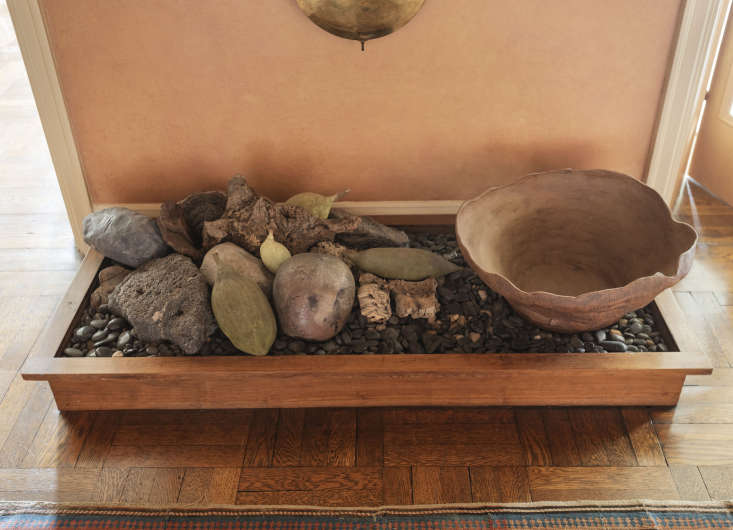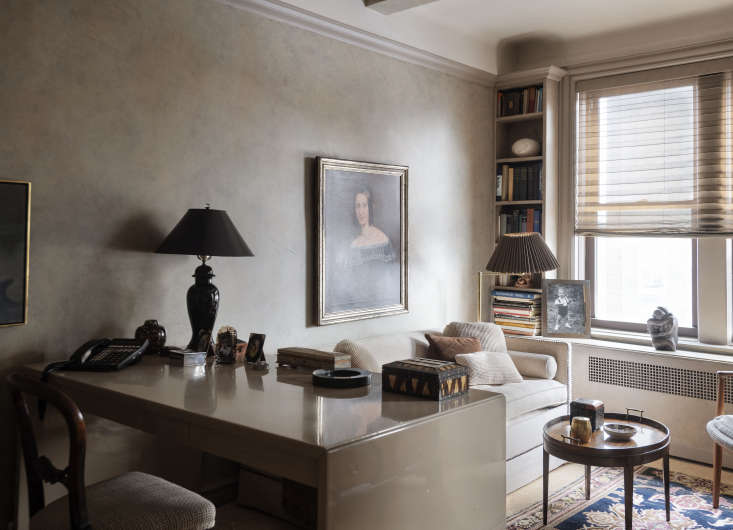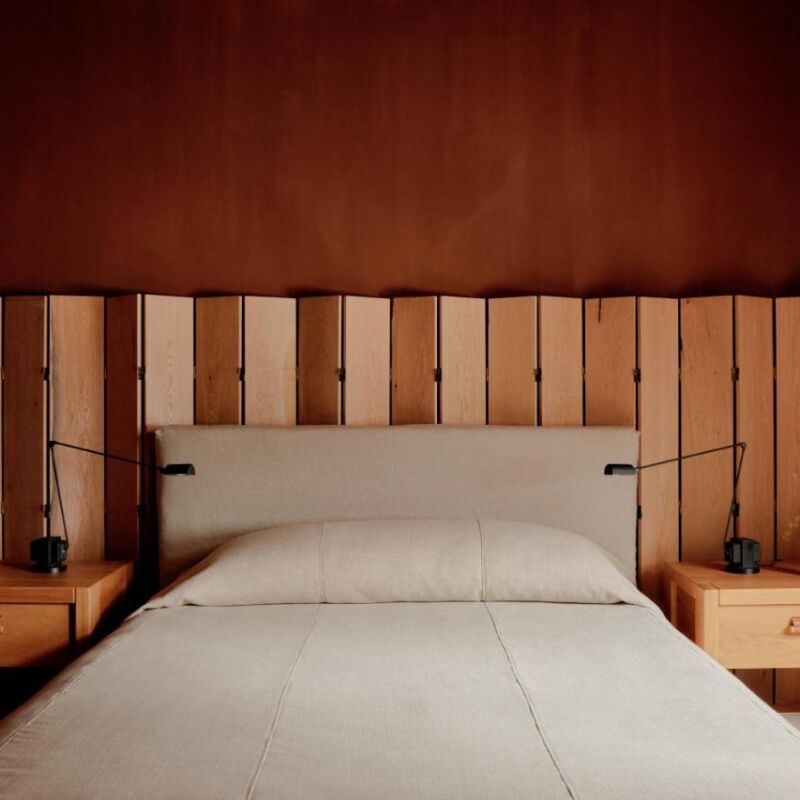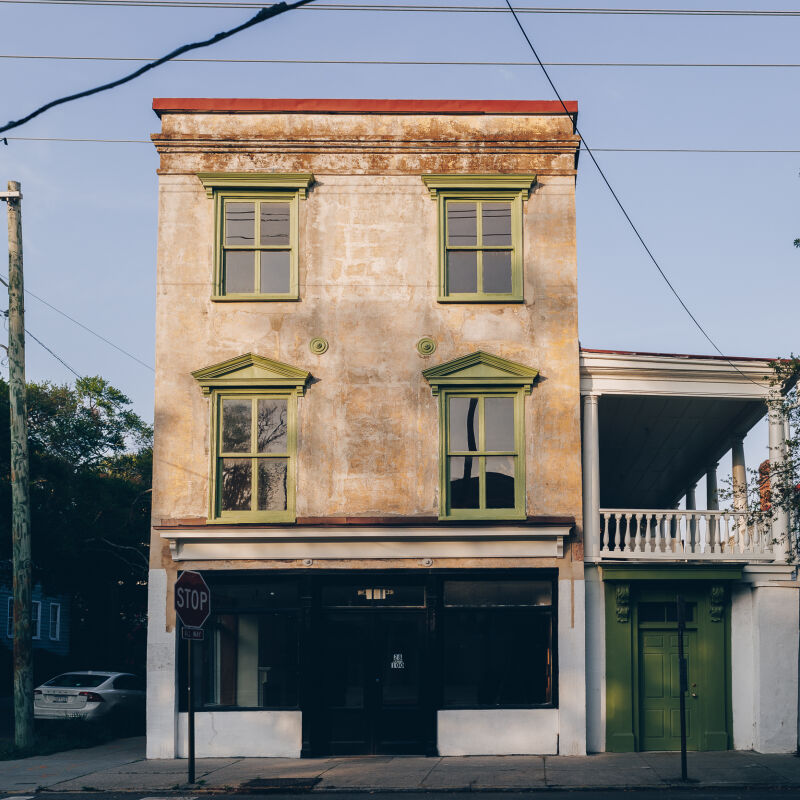This is the first of a now-and-then series celebrating the lives of Remodelista design heroes. For our first installment, Gardenista founder and Wall Street Journal columnist Michelle Slatalla reminiscences about her friendship with the remarkable Doris LaPorte Fingerhood.
The first time I saw Doris LaPorte Fingerhood’s apartment was at one of her famous pre-Thanksgiving parties. Jazz was wafting into the living room from the piano in her foyer. Friends and family and flowers filled her sprawling prewar rooms-with-a-view. And the nighttime scene outside her picture window was spectacular: under the glare of floodlights, nine stories below on West 77th Street, a giant, inflatable Snoopy balloon slowly filled with helium in preparation for Macy’s annual holiday parade the next morning.
But the best view on Thanksgiving Eve was always indoors, where Doris held court in a statement necklace and her favorite spot on her sofa. “She had an intimate, cultivated, lightly accented voice, which I can still hear,” said Remodelista founder Julie Carlson. “She was the kind of grande dame—without the airs—that we love.”
Doris, who died at home on December 9th at the age of 92, was my personal design hero. She had a gift for creating interiors that reflected their owners’ personalities, perhaps because she’d spent so much of her own childhood as a refugee from Nazi Germany, seeking comfort in strangers’ houses.
Consider this an homage to Doris, in my words, with photographs of her beautiful New York City apartment, by Matthew Williams.

Doris was born in 1928 in Hamelin, Germany (“where the Pied Piper comes from, but we moved to Berlin by the time I was a year old,” she later told an interviewer from the United States Holocaust Memorial Museum). In August of 1939, her parents, Leo and Rosetta Cohn, managed to secure spots for her and her younger sister, Hanna, on one of the last Kindertransport trains to leave the country, where the soon-to-be orphans would be relocated with foreign hosts in safe havens. The sisters were among the 10,000 children spirited out of Nazi-controlled Europe.
She spent the rest of the war shuttling from cottage to cottage in the English countryside before arriving in New York and into her Aunt Berta’s arms in 1946. A teenager, she immediately set to work fixing up her aunt and uncle’s Brooklyn basement on a budget of $12; “I knew I had found my calling,” she told me once.

In 1943, a final letter from the girls’ parents made it to England, smuggled out of Germany by a family friend: “Loving dolls,” their mother wrote to Doris and Hanna. “The main thing is you are well. My dearest wish is to be together again. All the best, kisses, and remember us. Father and Mother.”
Betrayed while they were in hiding in Berlin, Rosetta and Leo Cohn were deported to Auschwitz, where they died in 1944.

You would never know from meeting Doris that such harrowing and despicable things happened to her and to her family. She did not talk often about the war. “She didn’t want to be seen as a victim, and she didn’t believe it was constructive to dwell on the past,” said Olivia Fingerhood, the eldest of Doris’s three granddaughters.
“Doris was a person who lived in the present and looked to the future,” said her lifelong friend Kurt Roberg, a fellow German refugee whose book, A Visa or Your Life!, chronicled his own wartime escape. “She knew a lot more about my background than I did about hers.”

From the moment that an 18-year-old Doris and and her sister arrived in New York in 1946, she very deliberately became an American, as she said in her interview with the Holocaust Museum: “I knew this was for me.” After studying interior design at Pratt Institute in the 1940s, she decided she was destined to work with the influential designer Rena Rosenthal, who owned a Madison Avenue gallery that championed the work of emerging midcentury-modern designers, such as Russel Wright. “Essentially, my mom showed up at Rena Rosenthal’s door and refused to take no for an answer,” said her son, Steven Fingerhood.
A few years later, she signed on with design firm Macey-Fowler, which specialized in outfitting the office spaces of large Midtown firms. By the time she struck out on her own, “she had a lot of contacts from being the head of the interior design department at Macey-Fowler,” said her colleague Diane Provenzano, who worked for her from the 1970s until the day Doris died.

In the seventies, Doris established her firm, Doris LaPorte Associates (using the surname of her first husband), with headquarters in her West 77th Street apartment.
She collected art, and people, and stories; she encouraged up-and-coming artists, she purchased their paintings for her clients, invited would-be playwrights to her parties, and took young designers under her wing.
“She was an early champion of Remodelista,” said Julie Carlson. “She was 80-ish when we launched, and she was remarkably tech savvy. She understood and embraced our concept from the start. When I was living in Mill Valley and needed to fly to New York City for terrifying work duties—such as appearing on the Martha Stewart show—she arranged dinners to introduce me to her interior design circle. And when she traveled to San Francisco to visit her son, our great friend Steven, and her three granddaughters, she would entertain us at of-the-moment restaurants to talk shop and cheer us on.”

“Doris was the kind of interior designer who had clients for life; they were so addicted to her understated, elegant aesthetic that they refused to allow her to retire,” said Lucia Aleixo, who spent more than a decade at Doris LaPorte Associates. “Once they started working with Doris, they wouldn’t let go.”
Nearing the age of 90, Doris was called upon to tweak a Park Avenue apartment she’d decorated 40 years earlier: “We added new throw pillows, and that made a big difference,” she said.

What made Doris’s work so special was that she had an intuitive ability to express the loveliest aspects of her clients’ personalities in their living spaces. “Her design work was very subtle, and it was extremely individual. You would not recognize necessarily that it was done by Doris LaPorte Associates, but you would understand immediately that it could belong only to the person who lived there,” said Dr. Claire Fagin, who was Doris’s best friend since the early 1960s when the two met while touring prospective nursery schools for their young sons.
“I remember one apartment she did in New York that may be the most beautiful place I’ve seen in my life,” said Dr. Fagin, a former president of the University of Pennsylvania. “For the dining room, she commissioned sheer fabric curtains patterned with an image of the New York skyline. At night, with the lights on and the real skyline behind it, it was glorious.”


Doris was great friends with the renowned NYC art dealer and collector Ben Heller, who catapulted Jackson Pollack to international fame in the seventies. “Over the years, he would lend her pieces that were too large for his own space, if you can imagine that,” Steven Fingerhood said. In the 1970s, for instance, before she bought her Japanese antique screen for her living room, painter Larry Rivers’ monumental Washington Crossing the Delaware (which is now in the collection of the Whitney Museum) hung on the wall.
“The idea of ‘home’ had huge, special, enormous meaning for my mom,” said Steven Fingerhood. “Maybe it’s because when she was 11 years old, she left home to board a train—with only a suitcase and a prayer book her parents gave her, that’s all she had—and then was shunted around for years and didn’t have a real home. So she spent the rest of her life creating the one she wanted.”

“Everything in her apartment—it was just so her,” said Minna Fingerhood, Doris’s middle granddaughter. “My grandmother was extremely deliberate about everything in her apartment, and everything had a story.”

“She didn’t pay a lot for her Legros painting—or for any art, for that matter. She had a good eye and she found things,” said Steven Fingerhood. “Legros’s paintings were very representational at a time when no one was into that. But this was her favorite painting, even when her friends used to tease her and say, ‘Why do you have that on the wall?'”

Doris believed in other people’s talents as much as her own. When she built a Vermont ski house for herself, she hired a self-taught landscape artist whom she met at a farmers’ market to build a hand-split cedar rail fence for the property. The house was later published in the NY Times Magazine; as Carol Vogel wrote, “she purposely sought an unobtrusive design, one that fell within the vocabulary of rural New England architecture.”



Doris’s son, Steven, and all three of her granddaughters spoke at her funeral, describing her strength, her independence, her resilience, and her fierce love for them.
“On the eve of Thanksgiving, my grandmother—in her very weakened state—managed to have a glass of champagne with us,” Sarah Fingerhood said. “It made me see how traditions may change, but they don’t disappear. It was just the five of us, drinking champagne, but it was a party nonetheless.”





“Grandma was always very careful about the things she cared about, to the point that recently she repainted the little window ledge in her room that overlooks the museum,” said Olivia Fingerhood. “Even when she wasn’t feeling well, the things that mattered to her she kept up.”

“Doris had a brilliant career and her work was very well known, but she never sought the spotlight,” said Dr. Fagin. “She never pushed herself forward, although she was an amazingly charming person with terrific conversational skills. I’m not saying she was perfect. But there was something very special about her. You wanted to love her, and I did from day one.”
As did I.







Have a Question or Comment About This Post?
Join the conversation